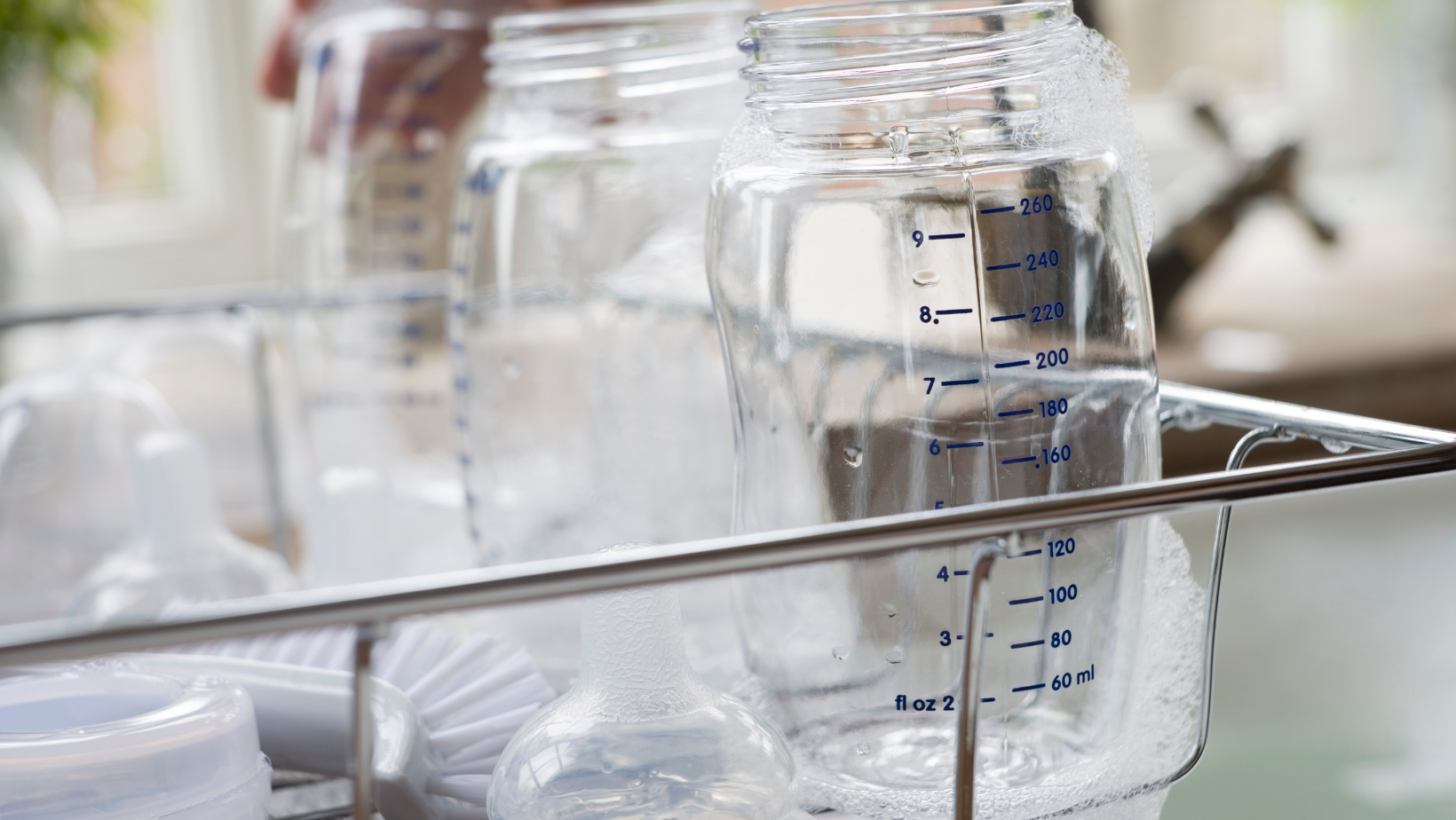The recommendations of the INESPQ 2024, Health Canada and the Pediatric Society recommend sterilizing all bottle items, including breast pump parts, up to 4 months of age, if the baby is fed commercial milk. If the bottle contains breast milk, rigorous cleaning may suffice, as breast milk contains antibodies that delay contamination. If, however, you prefer to sterilize the whole thing as a precaution, even with breast milk, of course you’re making sure to further prevent the spread of micro-organisms especially in circumstances where the baby is premature, immuno-suppressed or weakened by a precarious health situation.
Our experience with parents shows that more babies develop thrush and gastroenteritis when bottles and teats have not been rinsed, washed thoroughly and sterilized. In this sense, parents can adopt a preventive practice that still has its place.
How do I clean a feeding bottle?
Rigorous cleaning means removing any deposits or traces of milk that may be lodged in certain nooks and crannies.
- Always rinse the bottle and nipple well in cold water after use (the sooner you do this after the drinking, the easier it will be to dislodge the milk).
- Wash all parts in soapy water, using a brush to clean the bottom of the bottle and a very small brush to clean and dislodge the nipple.
- Rinse again with the hottest tap water.
For sterilization
In a cauldron
Bring a pot of water to the boil, covering all clean parts of the bottle. With the lid on, boil for at least 5 to 10 minutes. Leave to cool off, drain and air-dry. Make sure your hands are clean before handling the sterilized parts.
In the dishwasher
If you have a dishwasher with a high enough heat setting (sterilization mode), you can sterilize your bottles this way. You can buy little plastic boxes with holes on it, which you can put the little pieces of bottles and teats, and put the whole thing in the dishwasher – it’s very practical!
Sterilizing bags & sterilizers
Microwave sterilizer bags are also available, which are very effective. Simply put all the pieces and a little bit of water, then put it in the microwave and they are ready in 2 minutes!
Of course, you’ll also find battery-powered or electric sterilizers in big-box stores at all price points, and with different functions. Now it’s up to you to evaluate each one according to your needs. I hope this short text answers your question. Feel free to watch the bottle video and you’ll see these options firsthand.
Marie Fortier
The Baby Expert
Updated article : February, 2025.


